Related Research Articles

Actaeon, in Greek mythology, son of the priestly herdsman Aristaeus and Autonoe in Boeotia, was a famous Theban hero. Like Achilles in a later generation, he was trained by the centaur Chiron.
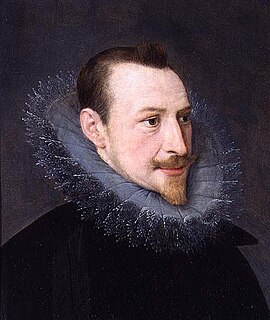
Edmund Spenser was an English poet best known for The Faerie Queene, an epic poem and fantastical allegory celebrating the Tudor dynasty and Elizabeth I. He is recognized as one of the premier craftsmen of nascent Modern English verse, and is often considered one of the greatest poets in the English language.
In Greek mythology, Lethe was one of the five rivers of the underworld of Hades. Also known as the Ameles potamos, the Lethe flowed around the cave of Hypnos and through the Underworld where all those who drank from it experienced complete forgetfulness. Lethe was also the name of the Greek spirit of forgetfulness and oblivion, with whom the river was often identified.
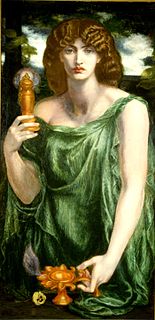
Mnemosyne is the goddess of memory in Greek mythology. "Mnemosyne" is derived from the same source as the word mnemonic, that being the Greek word mnēmē, which means "remembrance, memory".

Euterpe was one of the Muses in Greek mythology, presiding over music. In late Classical times, she was named muse of lyric poetry. She has been called “Giver of delight” by ancient poets.
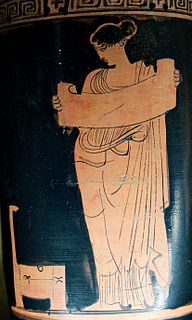
In ancient Greek religion and mythology, the Muses are the inspirational goddesses of literature, science, and the arts. They were considered the source of the knowledge embodied in the poetry, lyric songs, and myths that were related orally for centuries in ancient Greek culture.

In Greek mythology, the Hesperides are the nymphs of evening and golden light of sunsets, who were the "Daughters of the Evening" or "Nymphs of the West". They were also called the Atlantides (Ἀτλαντίδων) from their reputed father, the Titan Atlas.

In Greek mythology, the Naiads are a type of female spirit, or nymph, presiding over fountains, wells, springs, streams, brooks and other bodies of fresh water.
In Greek mythology, the Pegaeae were a type of naiad that lived in springs. They were often considered great aunts of the river gods (Potamoi), thus establishing a mythological relationship between a river itself and its springs.

Ugo Foscolo, born Niccolò Foscolo, was an Italian writer, revolutionary and a poet.
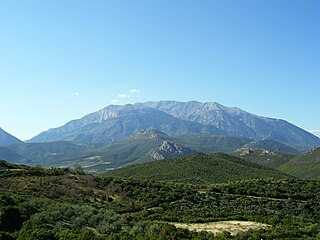
Mount Parnassus is a mountain of limestone in central Greece that towers above Delphi, north of the Gulf of Corinth, and offers scenic views of the surrounding olive groves and countryside. According to Greek mythology, this mountain was sacred to Dionysus and the Dionysian mysteries; it was also sacred to Apollo and the Corycian nymphs, and it was the home of the Muses. The mountain was also favored by the Dorians. It is suggested that the name derives from parnassas, the possessive adjective of the Luwian word parna meaning house, or specifically temple, so the name effectively means the mountain of the house of the god.

This article focuses on poetry from the United Kingdom written in the English language. The article does not cover poetry from other countries where the English language is spoken, including Southern Ireland after December 1922.

A pastoral lifestyle is that of shepherds herding livestock around open areas of land according to seasons and the changing availability of water and pasture. It lends its name to a genre of literature, art, and music that depicts such life in an idealized manner, typically for urban audiences. A pastoral is a work of this genre, also known as bucolic, from the Greek βουκολικόν, from βουκόλος, meaning a cowherd.

Hyacinth or Hyacinthus is a divine hero and a lover of Apollo from Greek mythology. His cult at Amyclae southwest of Sparta dates from the Mycenaean era. A temenos or sanctuary grew up around what was alleged to be his burial mound, which was located in the Classical period at the feet of Apollo's statue. The literary myths serve to link him to local cults, and to identify him with Apollo.
Thespiae was an ancient Greek city (polis) in Boeotia. It stood on level ground commanded by the low range of hills which run eastward from the foot of Mount Helicon to Thebes, near modern Thespies.

Mount Helicon is a mountain in the region of Thespiai in Boeotia, Greece, celebrated in Greek mythology. With an altitude of 1,749 metres (5,738 ft), it is located approximately 10 kilometres (6 mi) from the north coast of the Gulf of Corinth. Some researchers maintain that Helicon was also the Greek name of mount Rocca Salvatesta in Sicily as a river started from it was called also Helikon.
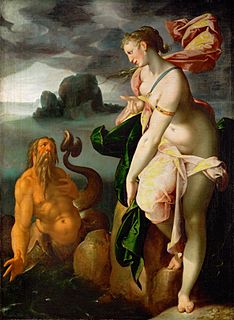
In Greek mythology, Glaucus was a Greek prophetic sea-god, born mortal and turned immortal upon eating a magical herb. It was believed that he came to the rescue of sailors and fishermen in storms, having earlier earned a living from the sea himself.

Orpheus is a legendary musician, poet, and prophet in ancient Greek religion.
Pegasides were nymphs of Greek mythology connected with wells and springs, specifically those that the mythical horse Pegasus created by striking the ground with his hooves.
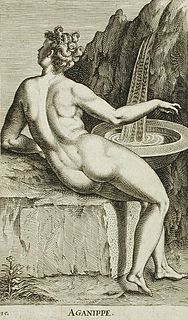
Aganippe was the name of both a spring and the Naiad associated with it. The spring is in Boeotia, near Thespiae, at the base of Mount Helicon, and was associated with the Muses who were sometimes called Aganippides. Drinking from it was considered to be a source of poetic inspiration. The nymph is called a daughter of the river-god Permessus. Ovid associates Aganippe with Hippocrene.
References
- ↑ Chisholm, Hugh, ed. (1911). . Encyclopædia Britannica . 2 (11th ed.). Cambridge University Press. p. 158.
- ↑ Ovid. Metamorphoses, 5.333.
- ↑ Pausanias. Description of Greece, 9.5.1ff.
- ↑ Callimachus. Hymn, 4.75.
- ↑ Virgil. Eclogues , 6.65.
- ↑ Virgil. Eclogues, 10.12.
- ↑ Jonson, Ben. “An Ode to Himself”, 7-8.
- ↑ Milton, John. Paradise Lost, 1.14-15.
- ↑ Pope, Alexander. Messiah, 4.
- ↑ Foscolo, Ugo. Sonnet, 11.
| This article about a location in ancient Boeotia is a stub. You can help Wikipedia by expanding it. |